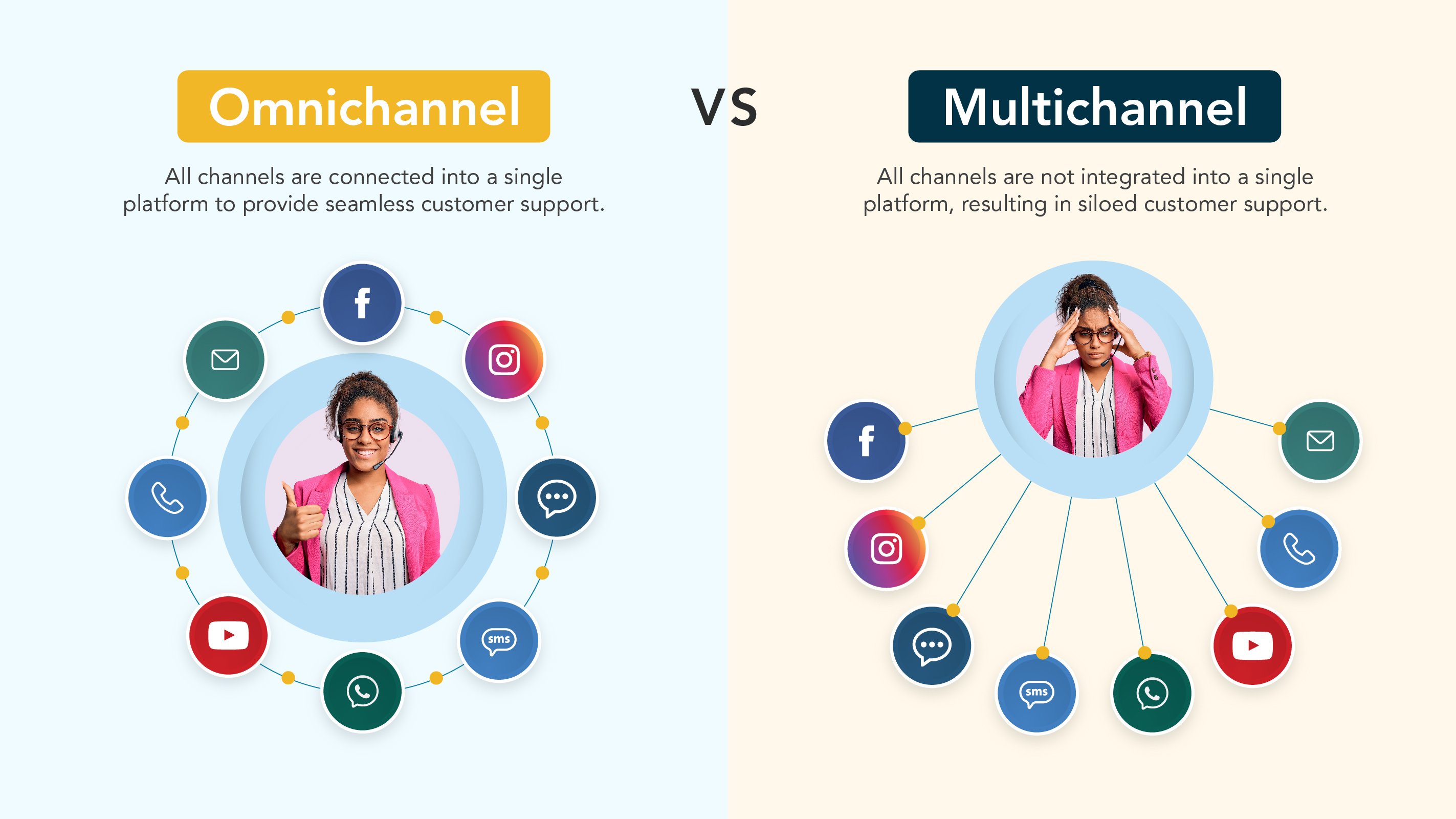Consumers in today's market want to interact with brands using the platforms and mediums that are most convenient for them personally, such as the gadgets and social media platforms that they like. When it comes to communication, customers have a wide variety of alternatives available to them, ranging from more conventional channels such as email and phone to more contemporary channels such as text messaging and virtual assistants. It is essential for companies to interact with their target audiences across all platforms in a unified and natural approach. In order to do this, it is necessary for businesses to transition their customer service strategy and contact center operations from multichannel to omnichannel.
What exactly is an omnichannel contact center?
A multichannel contact center gives businesses the ability to interact with customers via a variety of different channels (hence the name). Customers are given options regarding the manner and location of their interactions with a company. A traditional phone call to customer care is preferred by some customers, while others would rather communicate with the company by e-mail or even just instant chat. However, due to the fact that each channel in a multichannel contact center operates in isolation from one another, silos of data are created. Because the data from one channel is not always shared with the data from another channel, agents are unable to have a comprehensive perspective of the journey that the consumer takes. On some of the available channels, some but not all of the interactions with customers will be broadcast. This can lead to a disconnected experience for both consumers and agents; it's the reason why customers find themselves needing to repeat basic information such as their name or password to many agents. This can lead to a disjointed encounter.
What exactly is an omnichannel contact center?
The definition of "omni" is "all; of all things," it means that the platform's communication channels are organically designed to function together and are connected. Nonetheless, at its core, omnichannel functionality ensures that customer communication happens across all channels and that agents can view all past interactions on each channel. With omnichannel, customers will no longer be required to repeat fundamental information. Once it’s on the platform, all agents will have access!
Maintaining communication across all channels is crucial.
When it comes to delivering an exceptional customer experience (CX), the importance of context cannot be overstated. The data from each channel helps to fill in the context puzzle in some way. The term "omnichannel" refers to a situation in which all of the available channels of communication are coordinated with one another to ensure that the context of each contact is preserved. And because they have access to data from all channels, agents are able to view all of the points along the path of a customer, which is very necessary in order to deliver first-rate service. Agents have access to almost all information, such as whether or not a customer:
- Accessed the company software
- Communicated with an automated chatbot
- Contacted with an agent through live chat
- Sent an email or left a voicemail
- Has talked with an agent through phone
- Has sent a photo or a video related to the issue.
These are some of the touchpoints a customer may encounter on their journey. There are likely many more. The use of an omnichannel solution guarantees that experiences remain consistent, independent of the touchpoints that were taken or when they were taken. It also ensures that the context is preserved across all channels, which enables agents to send and receive errands faster and eliminates the need for clients to repeat themselves.
Let’s look at the example of an omnichannel customer experience.
An existing customer purchases a laptop through the website of an online electronics company. A few months later, the customer accidentally breaks the laptop's screen by dropping it. The customer visits the company's website for instructions. A chatbot window appears and provides the customer with the retailer's customer service number so they may speak with a live agent about repair options. The customer is immediately sent to the relevant department following a brief and easy encounter with a smart bot after dialing in. The agent requires a photo of the broken screen in order to verify and document the issue, so the customer sends the agent a photo by SMS while still on the line.
The customer sends over the laptop to the company using a pre-paid label that was emailed by the agent before the call ended. A week later, the customer sends an email to the repair department to inquire about the progress of the laptop. Despite the fact that the mail tracking indicates that the laptop was sent, they respond that there is no record of its arrival at the repair company. As a result of the retailer using an omnichannel contact center, the agent has immediate access to the complete history regarding the laptop and can begin an investigation immediately.
A day later, the customer calls support to check in and talks with a different agent. The new agent is aware of all dealings with this customer, including the purchase of the laptop, the original repair inquiry by phone, the emailing of a prepaid return label, and the lost laptop. The laptop is located and fixed, and this new agent provides a delivery date and time. For all of his/her trouble, s/he offers the buyer a discount towards a future purchase for the trouble inconvenience caused.
Keep up with customer demand.
The experiences that customers encounter with a company do not have to be bad. Simply said, this is what the vast majority of the currently available technology enables. The store in this scenario was able to deliver smooth, consistent, and better customer service thanks to the presence of an omnichannel contact centre. This was the case even when an unexpected situation, such as a misplaced laptop, emerged.
Now that customers are in the driver's seat, it is time for businesses to catch up with what their customers need, want, and deserve. Customers will no longer be given information about the options available to them. Customers will explain to you how you are going to do business with them. And if you are unable to do things their way, you will not do them at all.


